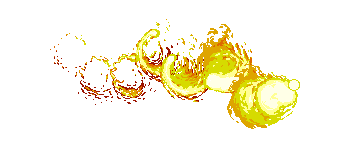The Boeing P-8 Poseidon is a really the anti-submarine warfare (ASW), anti-surface warfare (ASUW), and intelligence, surveillance and reconnaissance (ISR) roles. It is armed with torpedoes, Harpoon anti-ship missiles, and other weapons, can drop and monitor sonobuoys, and can operate in conjunction with other assets, including the Northrop Grumman MQ-4C Triton maritime surveillance unmanned aerial vehicle (UAV).Shorter transit times reduce the size of the Area of Probability when searching for submarines, surface vessels or search and rescue survivors.
P-8 is also designed for low altitude missions and has already proven its abilities supporting humanitarian and search and rescue missions.A militarized version of the Boeing 737 commercial aircraft, the P-8A Poseidon is intended to replace the U.S. Navy’s ageing P-3 Orion fleet as the service’s front-line anti-submarine warfare aircraft.
The P-8A has an active multi-static and passive acoustic sensor system, inverse synthetic aperture radar, new electronic support measures system, new electro-optical/infrared sensor and a digital magnetic anomaly detector.
Its nine-person crew includes a dual-pilot cockpit and five mission crew (plus relief pilot and in-flight technician). The P-8A has workstations with universal multi-function displays, and ready accommodation for additional workstations and workload sharing. The Poseidon is armed with an internal five-station weapons bay, four wing pylons, two centerline pylons, all supported by digital stores management allowing for carriage of joint missiles, torpedoes and mines. Boeing was awarded the contract to develop the P-8A on June 14, 2004. The P-8A will be a derivative of a modified Boeing 737-800ERX airliner, bringing together a reliable airframe and high-bypass turbo fan jet engine with a fully connected, state-of-the-art open architecture mission system.
The P-8 is operated by the United States Navy, the Indian Navy, the Royal Australian Air Force, the United Kingdom's Royal Air Force, the Royal Norwegian Air Force and the Royal New Zealand Air Force. It has also been ordered by the Republic of Korea Navy, and the German Navy. As of 16 May 2023, 160 P-8s have been delivered.
The P-8 has two variants: The P-8I, flown by the Indian Navy, and the P-8A Poseidon flown by the U.S. Navy, the United Kingdom’s Royal Air Force, Royal Australian Air Force, Royal Norwegian Air Force and Royal New Zealand Air Force.
Militaries that have selected the P-8 include the Republic of Korea Navy and German Navy. The P-8’s performance and reliability delivers confidence in an uncertain world — in any condition, anywhere, anytime.
The P-8 combines the most advanced weapon system in the world with the cost advantages of the most operated commercial airliner on the planet. The P-8 shares 86% commonality with the commercial 737NG, providing enormous supply chain economies of scale in production and support. Boeing’s expertise in commercial fleet management and derivative aircraft sustainment provides customers with greater availability at a lower operational cost. The P-8 is engineered for 25 years/25,000 hours in the harshest maritime flight regimes, including extended operations in icing environments.
Specification :
Crew: Flight: two; Mission: seven
Capacity: 19,800 lb (9,000 kg)
Length: 129 ft 5 in (39.47 m)
Wingspan: 123 ft 6 in (37.64 m)
Height: 42 ft 1 in (12.83 m)
Empty weight: 138,300 lb (62,730 kg)
Max takeoff weight: 189,200 lb (85,820 kg)
Powerplant: 2 × CFM56-7B27A turbofans, 27,300 lbf (121 kN) thrust each
Performance :
Maximum speed: 564 mph (907 km/h, 490 kn)
Cruise speed: 509 mph (815 km/h, 440 kn)
Combat range: 1,383 mi (2,225 km, 1,200 nmi) radius with 4 hours on station for anti-submarine warfare mission
Ferry range: 5,200 mi (8,300 km, 4,500 nmi)
Service ceiling: 41,000 ft (12,496 m)
Armament :
Hardpoints: 11 total
Internal bay with 5 hardpoints and 6 external hardpoints for a variety of conventional weapons, e.g. AGM-84 Harpoon, AGM-84H/K SLAM-ER, AGM-88 AARGM-ER,[197] AGM-158C LRASM, Mark 54 torpedo, naval mines, depth charges, and the High Altitude Anti-Submarine Warfare Weapon Capability (HAAWC) system
Avionics :
Raytheon AN/APY-10 multi-mission surface search radar
AN/ALQ-240 Electronic Support Measures Suite
AN/APS-154 Advanced Airborne Sensor









0 comments:
POST A COMMENT